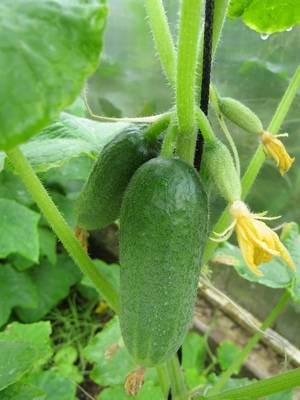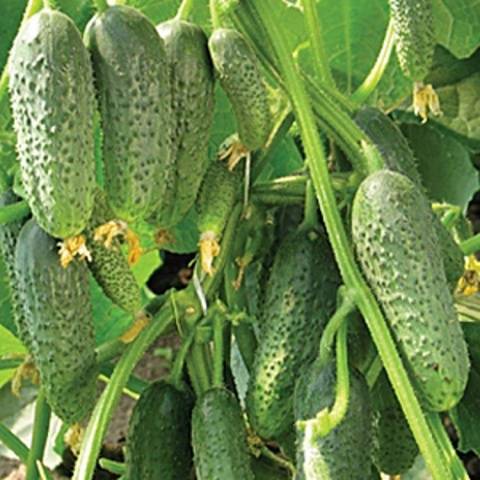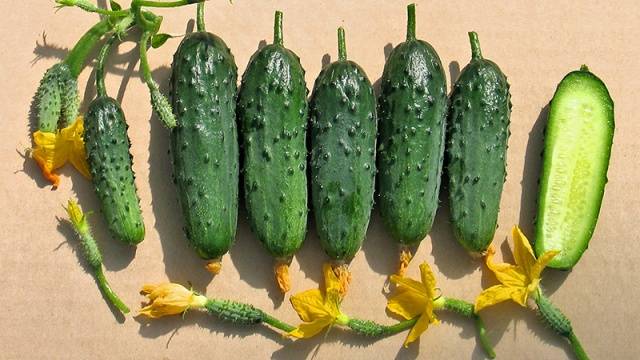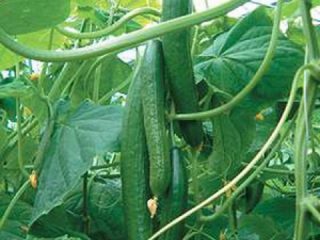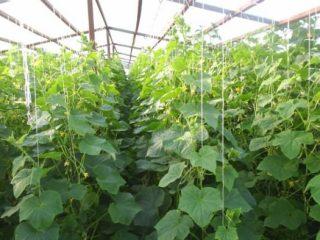Content
Quite often, even among fully qualified gardening enthusiasts, disputes arise as to whether pickles are a specially bred variety of cucumbers or just a type of fruit of a certain age and size. This seems all the more surprising since there are no difficulties with the description and definition of the concept of “pickles”.
Definition of pickle
In order to clearly understand what a given word means, you need to uncover several semantic layers.
These could be eggplant ovaries or tiny heads of garlic, miniature ears of corn or small onions. It should be said that the word has English roots and is translated literally as “pickled.”
A little later, the concept of “pickles” acquired a second meaning, which became much more common. Namely, small, one might say tiny, cucumbers collected at one or two days of age. Strictly speaking, this is more of an ovary than a more or less formed fruit. Their size is approximately 3-5 centimeters. The special value and piquancy lies in the fact that at this age the pickles combine cucumber flavor with a hint that is unique to them.
What are the advantages of cucumber varieties for growing pickles that have allowed them to become widespread in recent years? Of course, the original taste is important, but the reason is not only that.
The fact is that pickle varieties of cucumbers (as well as gherkins) begin to bear fruit 35-40 days after the shoots appear. The fruiting process rarely lasts more than a month. During this time, cucumbers remain as healthy as possible, simply not having time to acquire and accumulate any diseases, and also remain almost completely free from the influence of chemicals. In addition, an additional advantage is that after the fruiting period, the area they occupy is freed up and can be used for other purposes.
Features of growing varieties of pickles
It is quite difficult to find information about what special requirements must be met for the proper cultivation of pickled cucumber varieties. For the most part, caring for them differs little from the agricultural practices of gherkin or green cucumber varieties. You can partially learn about this from the video:
However, some features still exist.
Some nuances of caring for pickles:
- the soil should be slightly more fertilized and loose than for ordinary varieties of cucumbers;
- the soil acidity level should be pH 6-7;
- during all 1-1.5 months of harvest formation, regular, balanced and evenly distributed nutrition is necessary;
- Before planting pickled cucumber seedlings, it is necessary to add organic matter to the soil (manure - up to 10 kg per 1 sq.m.) and fertilizers with minerals (per 1 sq.m. - 5 g of magnesium, 20 g of potassium, 25 g of phosphorus, 18 g of nitrogen, all dosages according to the active substance);
- Fertilizing of pickle varieties of cucumbers usually begins 10-15 after planting. It is carried out according to traditional methods and in quantities that do not differ from feeding conventional varieties;
- An important nuance is that pickled varieties of cucumbers need more frequent watering, although it is not entirely clear why this is due. There are two possible reasons: rapid ripening of the fruit or a weaker root system compared to ordinary cucumbers;
- a mandatory requirement is that the fruit pickles must be collected daily. This is due to the fact that, otherwise, neighboring bunches may dry out.
In addition to all of the above, one more important feature of pickle cucumber varieties should be noted. They are very susceptible to cold temperatures. Therefore, in most regions it is recommended to grow seedlings for 3-4 weeks and plant them after the soil has warmed to +14 - +16 degrees.
Most popular varieties
Son of the F1 regiment
One of the most common early-ripening bee-pollinated hybrids, it has high yields and can be used for both open and closed ground. The female type of flowering predominates, the degree of branching is average.
Pickles of this variety, as a rule, have a light green color and a cylindrical shape. The fruits have light stripes, large tubercles and white spines. There are usually 2-3 cucumbers in a bunch.
The cucumber variety has increased resistance to most diseases and pests, in particular, cucumber mosaic virus, powdery downy mildew and the common scab of pumpkin crops.
Philippok F1
No less common is a mid-season hybrid, which is used for film shelters and open ground.
The fruits practically do not overgrow, remaining dense and crunchy and without turning yellow.
They are usually dark green in color, cylindrical in shape, as well as light stripes and are coarsely tuberous. The yield of this cucumber variety reaches 10 kg/sq.m. The plant is vigorous and highly branched, with a predominance of female inflorescences. This variety is characterized by intense fruiting. It is considered one of the highest quality in terms of taste characteristics. It is immune to certain diseases such as downy mildew, leaf spot and cucumber mosaic virus.
White Angel F1
Mid-early hybrid of pickled cucumbers. Most often it has short fruits of light green color, which, like a significant part of its analogues, have white spines and characteristic light stripes. The tubercles are located much less frequently than those of most other pickles. In addition, the variety is genetically predisposed to a lack of bitterness.
This species is practically immune to a disease that is often found in various varieties of cucumbers, namely, downy mildew. The knot usually contains 2-3 cucumbers.
Moth F1
The variety is a mid-early hybrid with a ripening period of up to 55 days. Can be used both for film shelters and for open ground. The arrangement of the ovaries is traditional for these varieties, 2-3 fruits each.Productivity reaches 10 kg/sq.m. The shape of the cucumbers is cylindrical, short, the fruits have a slightly glossy tint, do not contain bitterness and voids during processing.
Sweet crunch
An original variety of pickled cucumbers with a bright and unique taste. In addition, the surface of the fruit has a distinct light green color, almost white in places, with characteristic black spines. The weight of one cucumber reaches 50-65 grams.
Marinade F1
One of the most productive early ripening hybrid varieties of pickles. It has a beautiful shape with small tubercles of a classic dark green color. It is used both when growing in greenhouses and in open ground. It is highly resistant to the vast majority of diseases that occur and are characteristic of cucumber varieties: cucumber mosaic, brown spot, powdery mildew.




